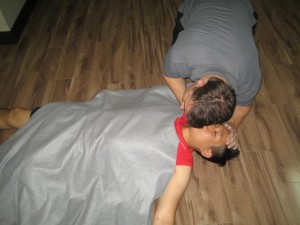Fact Checked
First Aid Steps
The total number of individuals who perish in road traffic accidents is awful, and unawareness along with biased notions could be the reason of these deaths.
- If you have been wounded in the accident, first examine yourself for any wounds. Try to evaluate how well you can move your legs and arms, and if you notice any symptoms such as light-headedness etc. You must be fit enough to aid others who might have been injured in the accident.
- If other causalities are hurt, first evaluate the magnitude of his/ her injuries. For instance, loss of blood from the neck, face, head, legs, stomach and back etc. Treat the quietest casualty first, they are generally more seriously wounded or can’t breathe. Casualties who can speak or cry, can breathe so they can be treated a bit later.
- Next, look to see if the casualty is breathing and if you can feel a pulse.
First Aid For Car Accident Victims
- Phone for an ambulance right away or drive the casualty to the emergency room. Take as much details as possible about the casualty’s condition so you can give the doctors as much information as possible.
- If you do not hear any signs of breathing, check in the casualty’s mouth for anything that could be obstructing the airway. If you see that something is blocking the airway, use your middle finger to remove the obstruction.
- If you notice there is no pulse, start CPR
- If there is blood loss from the mouth or the casualty is vomiting, place the individual to his/her side. This will side-step any chances of the individual choking.
- If there are severe wounds, try to manage the bleeding using direct force to the area using a rag or any clothing. Rather use your palms to apply pressure on the wound.
- Do not offer water or anything through the casualty’s mouth, the casualty could choke.
Transporting The Casualty To Hospital
- The casualty should be taken on a stretcher.
- Keep the casualty’s neck and back in a straight line.
- Make sure that the casualty is lying down flat.
- Make certain the casualty is breathing and has a pulse while on the way to the hospital. Start CPR if the casualty stops breathing.

